Revive old WordPress posts with AI and Uncanny Automator. Learn how to reverse content decay…
How to Automate Your eCommerce Business — And Make More Money!
eCommerce automation is the key to growing your WordPress business. We’ll show you how to automate your ecommerce business so you can work less and make more.
We don’t have to tell you; ecommerce is a fast and furious business. And with 27 million ecommerce websites, keeping up with the competition can be a challenge.
But that’s where automation comes in.
By making automation part of your ecommerce operations, you can save time, increase efficiency, and ultimately boost your bottom line.
Imagine automating your inventory management to ensure your most popular products are always in stock. Or, how about automating your lead generation process to optimize your conversion ratios? Ever wanted to incorporate AI into your customer service workflows for speedy responses?
With automation, all of those scenarios and more are possible.
In this article, we’ll show you how to automate your ecommerce business. We’ll help you identify areas in your business that you can start automating right away. And, finally, we’ll introduce you to the one tool for the job: Uncanny Automator.
Let’s get started.
What Is eCommerce Automation Anyway?
In the simplest of terms, automation is the process of implementing technology to perform tasks—particularly repetitive tasks. If that sounds uselessly broad, it’s only because automation has become ubiquitous in our world today. You interact with it all the time.
“More specifically, however, ecommerce automation is the process of applying technology to tasks such as order processing, inventory management, and marketing to improve efficiency, reduce errors, and foster growth.”
For example, consider how Spotify or another one of your subscription services sends you reminders as your renewal date draws near. Or think about how Amazon sends emails or push notifications with product recommendations based on your past purchases or search history. And what about that scannable QR code allowing you to register your warranty with the click of a button?
Those are all examples of ecommerce automation. Moreover, they are examples that, with the right tools (which we’ll explore later on), you can replicate yourself.
Picture this automated workflow:
- An unregistered customer lands on your website.
- After they’ve scrolled through your product catalog for 15 seconds, a popup appears offering them a 10% discount, just for entering their email.
- The customer enters their email address, is automatically registered on your website, and emailed an exclusive 10% off coupon code.
- The customer uses the coupon code at checkout while, in the background, their checkout information is automatically synced with your CRM.
- Simultaneously, your product inventory is updated and, if it falls below a certain threshold, a notification is sent directly to your supplier.
- Your customer receives regular updates on their order until it is delivered or, in the case of digital products, they receive a drip of supplementary information such as how-to guides, discounts on up-sells, etc.
- All of your sales data is synced to Google Sheets in real-time, so you always know what’s happening in your ecommerce store.
- You take the day off, relax on the beach, and watch the tide (a.k.a., sales) roll in.
In ecommerce, automation isn’t just about finding efficiencies and creating new revenue streams or widening existing ones. It’s also about creating a seamless experience for both you and your customers.
In the next section, we’ll explore more of the benefits that you can expect from adopting ecommerce automation for your WordPress business.
Why You Should Embrace eCommerce Automation for Your WordPress Business
Automation isn’t just a buzzword—it’s a game-changer for ecommerce businesses, big and small. By incorporating automation into your ecommerce workflows, from lead generation to customer satisfaction and beyond, you can transform the way you do business.
Here are the key benefits that you can expect from ecommerce automation:
Whether you’re looking to save time, cut costs, or scale to new heights, automating your WordPress eCommerce store is the ultimate key to success.
So, how can you identify opportunities for automation in your ecommerce store? In the next section, we’ll take a look at different strategies for identifying areas in your ecommerce business that can use a little automation augmentation.
How to Identify Opportunities for eCommerce Automation
We keep promising that ecommerce automation will revolutionize the way you manage your WordPress business. But, where do you even start? How do you know which tasks and workflows can or should be automated?
We have a simple framework you can apply right now for identifying opportunities for automation within your ecommerce business. Think rich.
Criteria for Automation: R.I.C.H.
To identify opportunities for ecommerce automation within your business, focus on the tasks and workflows that meet the R.I.C.H. criteria:
- Repetitive: Tasks, particularly unavoidable ones, that you perform over and over again. For example, transactional emails, marketing emails, and inventory management.
- Iterative: Tasks that you can and/or do perform across any measurable number of customers, products, posts, pages, etc. or a subset thereof. These tasks usually include workflows such as product updates and customer/member onboarding. They can also include popups and customer segmentation.
- Costly: Tasks that consume significant resources, namely time and money. For example, data entry and lead validation are both costly workflows, primed for automation.
- Hard: Tasks that are complex and prone to human error. These workflows are usually operational in nature such as data entry and generating sales reports.
If a task satisfies one or more of these criteria, it’s a strong candidate for automation. Remember, when it comes to automation, think RICH!
eCommerce Tasks You Might Want to Automate
Now that you have a framework for identifying tasks that you can automate, here are some ideas to help get you started.
1. Order Management
Automating your order management processes can save time, reduce errors, and keep your business running smoothly. Key opportunities include:
- Transactional Emails: Order confirmations, order status updates, post-delivery follow-ups can all be automated from purchase.
- Inventory Management: Automatically update stock levels as sales occur and notify suppliers when inventory is low.
- Sales Management: Set automated notifications, appointments, and reminders for your sales team for specific orders and customer requests.
2. Internal Operations
Streamlining internal workflows improves efficiency and reduces the burden on your team. Consider automating:
- Internal Communications: Use tools like Slack or Microsoft Teams to send automated updates on order fulfillment workflows, meetings, etc.
- Employee Onboarding: Welcome new employees with automated course enrollment for job training or auto-share important documentation.
- Affiliate Management: Automate payments to and from your affiliates, set up affiliate tracking to monitor your most effective affiliates, and automate communications about upcoming sales, new products, and exclusive offers.
3. Marketing
Marketing automation helps you reach customers at the right time with the right message. Examples include:
- Email Campaigns: Automate welcome emails, abandoned cart reminders, drip campaigns, and more.
- Social: Automatically announce new products or sales on your social channels.
- Retargeting: Show personalized promotions to customers who viewed products/pages, engaged with content, and more.
- Loyalty Programs: Automatically track and reward customers for repeat purchases with personalized offers, store credit, etc.
4. Customer Service
Automation can enhance your customer service by providing faster, more efficient support. Opportunities include:
- Automated Review Responses: Thank customers for positive reviews or escalate negative ones for human follow-up.
- Chatbots: Provide instant responses to common questions, 24/7.
- Ticket Assignment: Automatically route support tickets to the appropriate team member or department.
5. Analytics and Reporting
Data is invaluable, but manually compiling reports can be time-consuming. Automation can help by:
- Automatically Generate Reports: Sync sales data in real-time to tools like Google Sheets or Airtable.
- Monitoring Performance Metrics: Generate automated dashboards to track KPIs like conversion rates and average order value.
- Tracking Sales Trends: Respond to changing trends in real-time with automated notifications for irregular order volumes, price fluctuations, and more.
6. Integrations
Automation thrives when your tools and platforms work seamlessly together. Use automation to:
- Connect Third-Party Apps: Sync your ecommerce store with CRMs, payment gateways, shipping providers, and more.
- Automate Data Transfers: Use file imports and exports to facilitate data transfer between sites and/or external apps.
Now that you have some criteria for identifying opportunities for automation, and a list of ideas to get you started, it’s time to start automating.
In the next section, we’ll introduce you to the best tool for the job: Uncanny Automator.
Automator: The Best eCommerce Automation Tool for WordPress Websites
Uncanny Automator is the #1 automation and integration tool for WordPress websites. Whether you’re running an ecommerce business, a membership website, or an affiliate blog, Automator is a must-have tool for saving time, cutting costs, and boosting your bottom line.
As the ultimate ecommerce automation solution for WordPress businesses, Automator can do everything we’ve already covered in this article—and then some.
From lead generation to sales reports, marketing automation to AI-powered copy, and affiliate tracking to project management, Automator handles it all.
Want a sneak peek at how ecommerce automation works with Automator? Get started for FREE right now! We’ll walk you through setting up your first recipe (that’s Automator lingo for revenue-boosting automation).
Here’s how you can create an automated loyalty program with WooCommerce and MyCred using Uncanny Automator. (Keep scrolling for even more automation ideas at the end.)
Step 1: Install and Activate Automator
- Download the FREE forever version of Automator here.
or
- From your WordPress Admin Dashboard, navigate to Plugins > Add New Plugin. Enter “uncanny automator” in the search bar and click Install Now.
- Bonus: Once you’ve installed and activated Uncanny Automator on your WordPress website, register your account to receive complementary app credits. You’ll be able to try integrations such as OpenAI, Slack, ClickUp, Google Sheets, and more for FREE!
Not sure how to install new plugins on your WordPress website? Check out this detailed guide from WPBeginner.
Step 2: Create a New Recipe
Now that you have Automator installed on your WordPress website, it’s time to start automating.
- From your WordPress Admin Dashboard, navigate to Automator > Create a new recipe.
- In the popup window that appears, select Logged-in users.
- Don’t forget to name your recipe. For example, we’ve named this recipe: “Frequent Shopper Badge”.
Step 3: Configure Your Trigger(s)
- In the Trigger panel, select Woo > A user completes, pays for, lands on a thank you page for an order with a product.
- Set the trigger conditions and click Save.
Step 4: Configure Your Action(s)
- In the Actions panel, click Add action and select MyCred > Award a badge to the user.
- Set the achievement type and award then click Save.
Step 5: Automate!
- In the recipe box in the top right corner, toggle the recipe from Draft to Live.
That’s it! Now, whenever one of our customers completes five (5) orders in our Woo store, Automator will award them with the “Frequent Shopper” badge.
Looking for more ways to automate your ecommerce store? In the next section, we’ll show you some powerful ecommerce automations you can set up with Automator now.
eCommerce Automations You Can Try Now
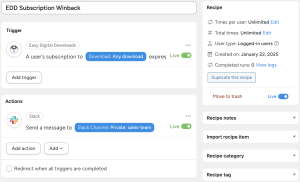
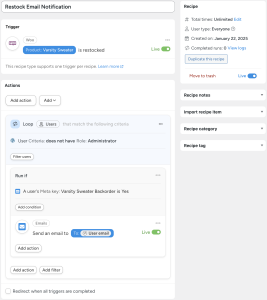
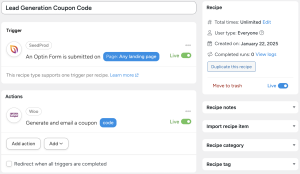
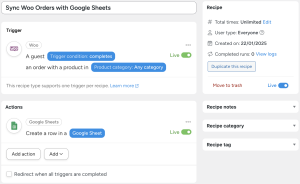
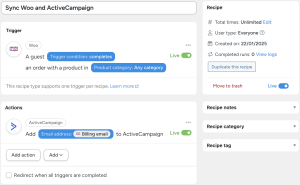
Still looking for more ways that Automator can unleash your WordPress ecommerce business?
Learn more about ecommerce automation from the #1 automation tool on the market >>>
FAQ: Common Questions About eCommerce Automation
Conclusion
In the fast and furious world of ecommerce, automation is no longer a luxury. Nor is it an advantage that only large businesses can afford.
eCommerce automation is now a must-have for WordPress businesses to remain competitive and to continue providing their customers with the experience they expect.
For small, medium, and even large businesses, Uncanny Automator has made ecommerce automation accessible, fun, and cost-effective.
From saving time and cutting costs to delighting customers and scaling with ease, automation empowers your WordPress business to achieve more with less effort.
If you haven’t already gotten your Automator Pro license, there’s no time like the present.
Transform the way you do ecommerce with Automator Pro and get R.I.C.H, >>>
Until next time, happy automating!


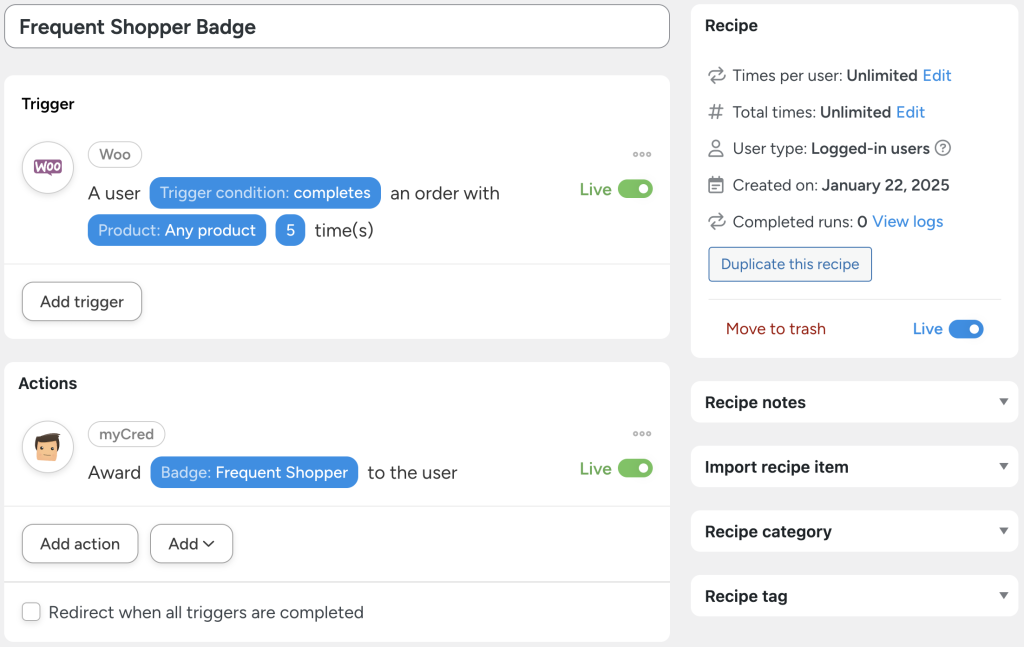
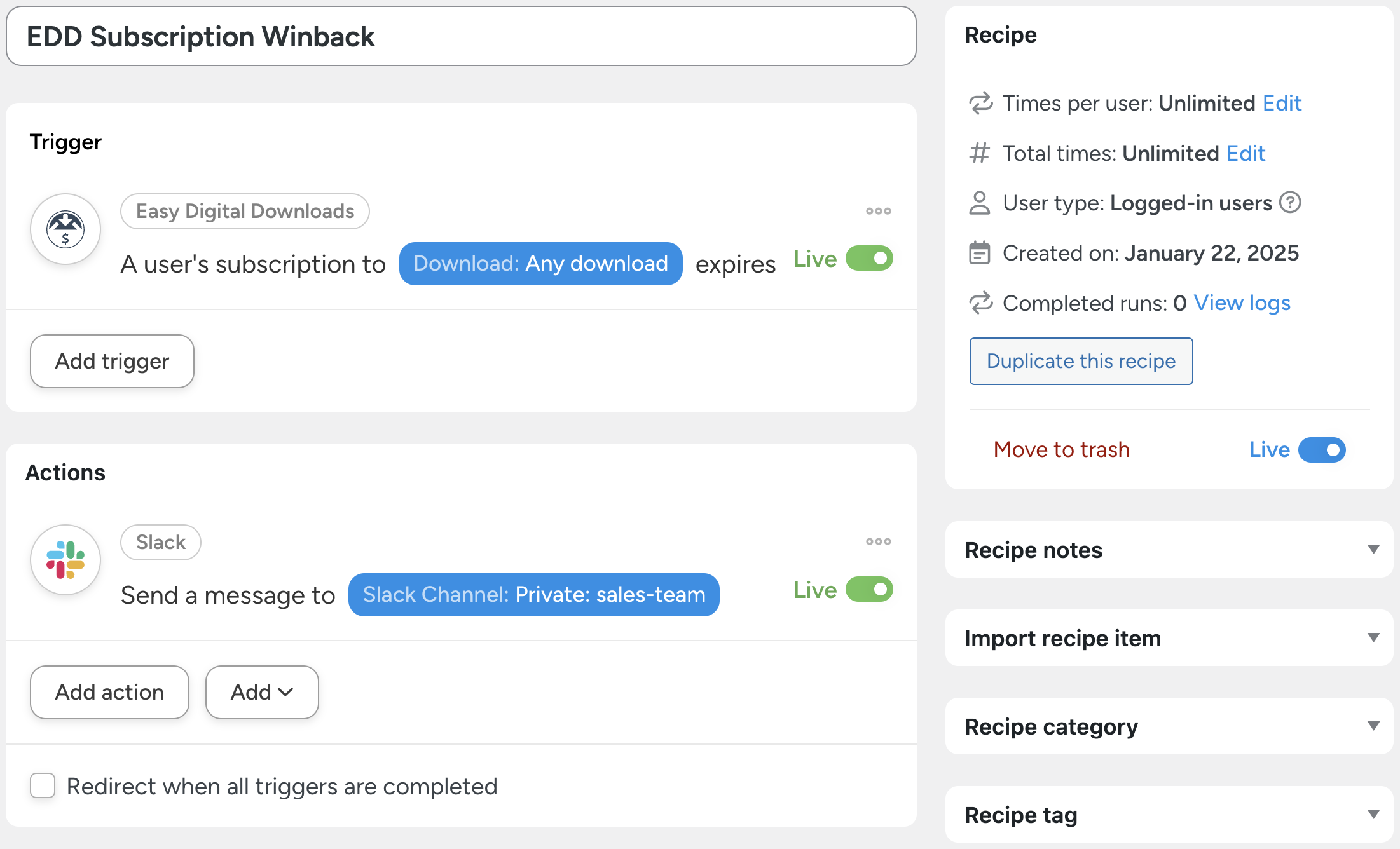
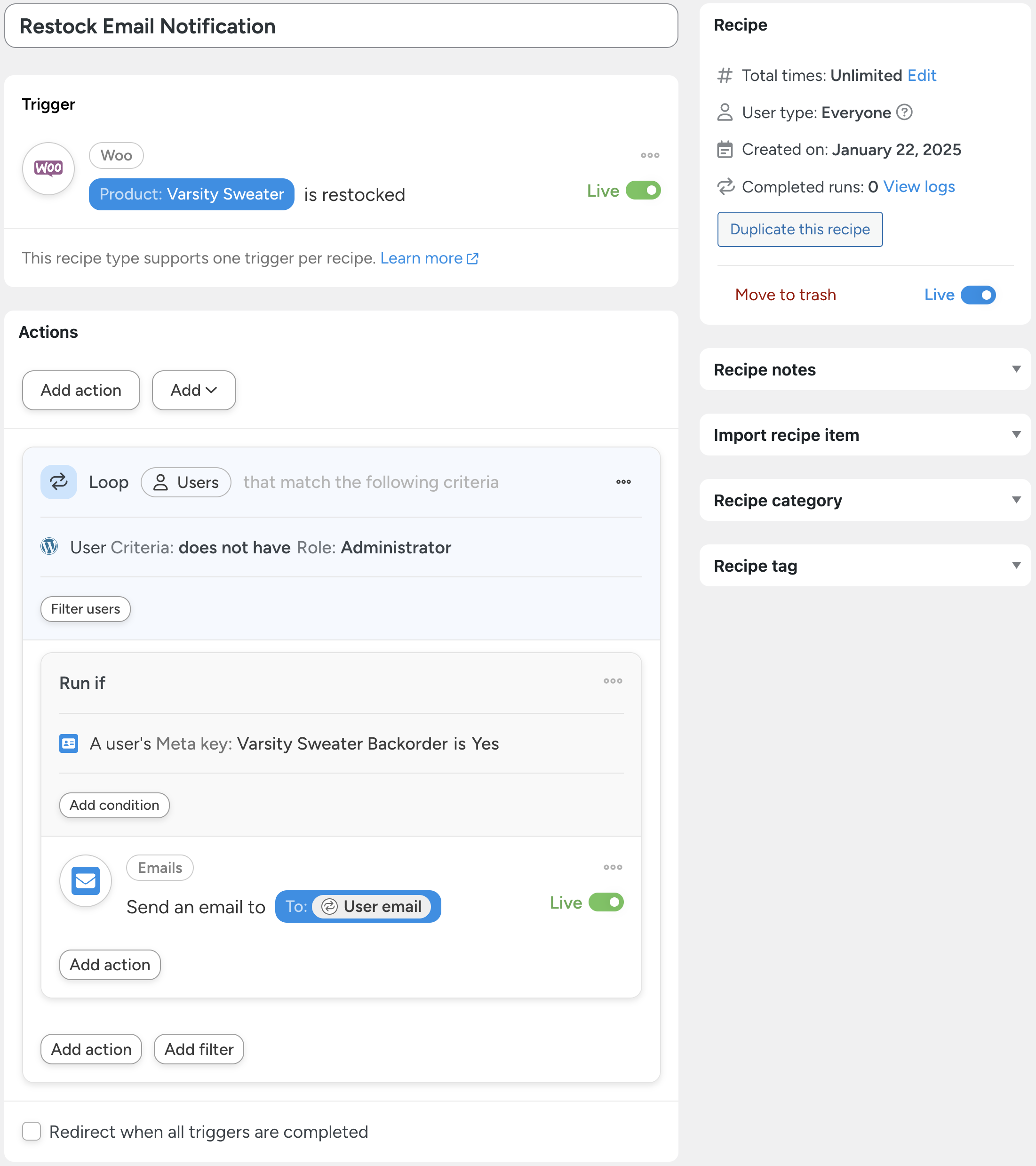
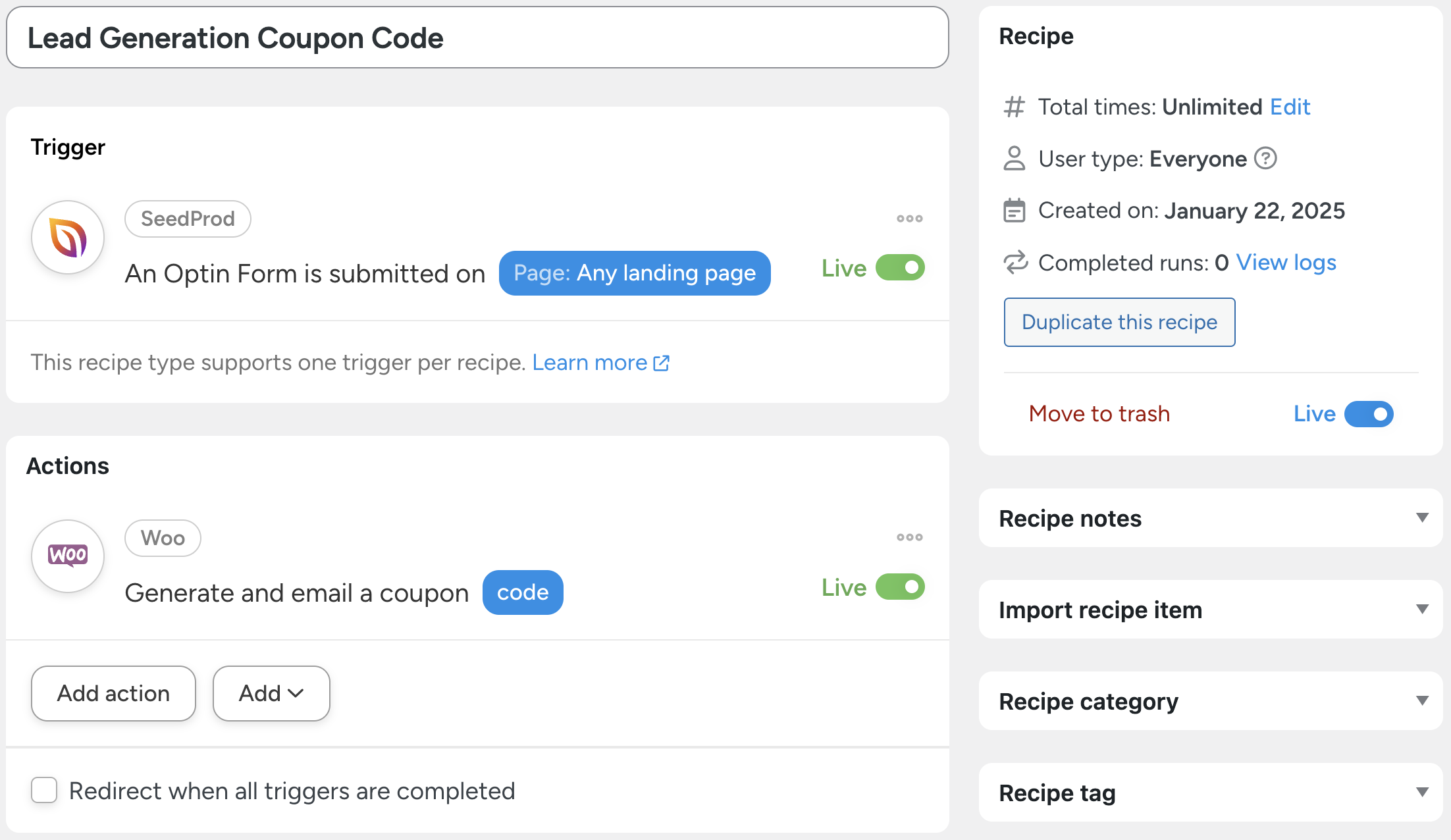
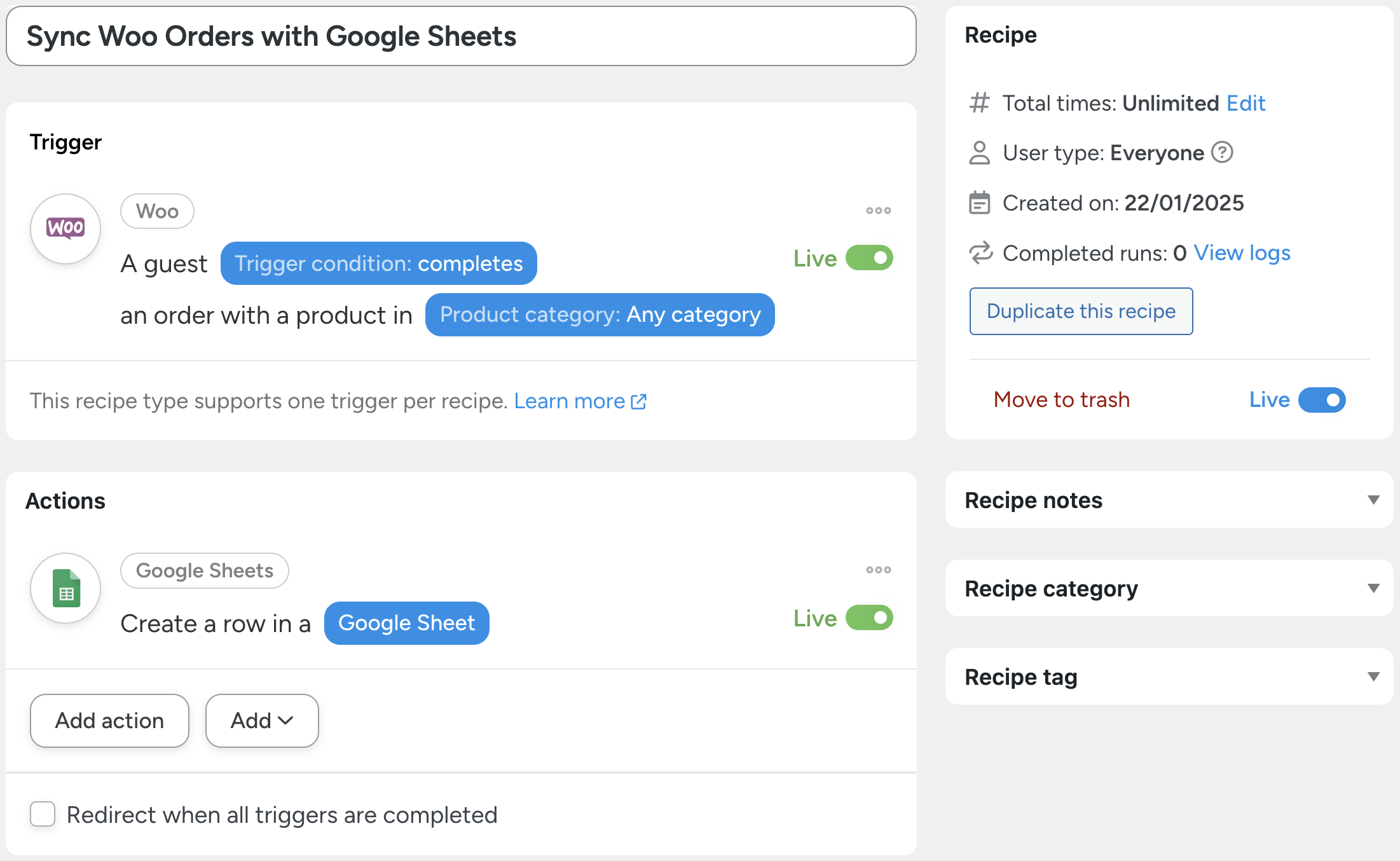
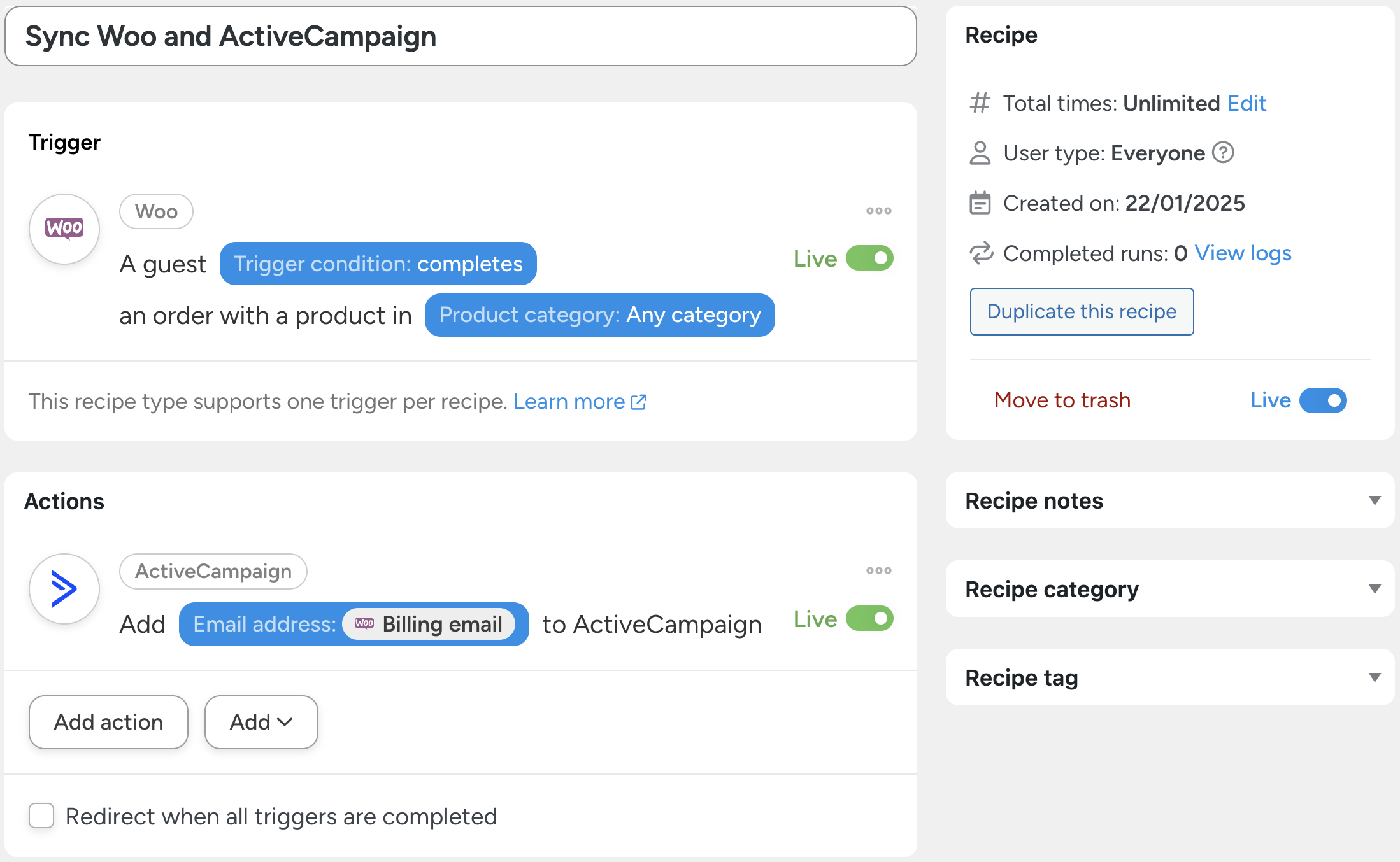

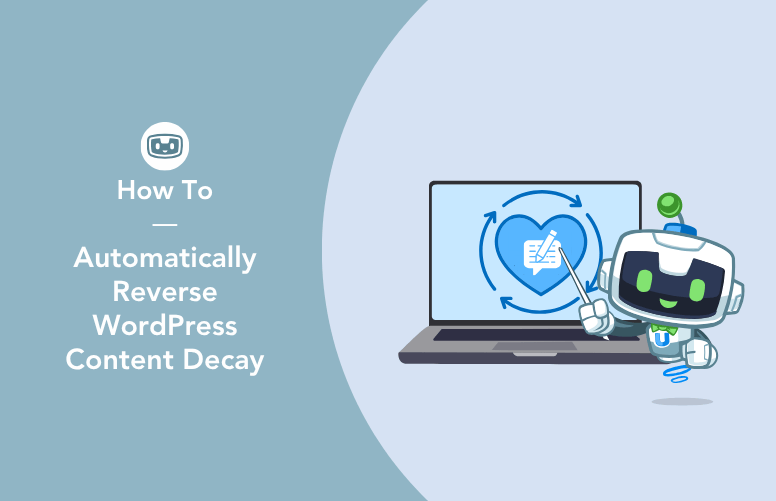

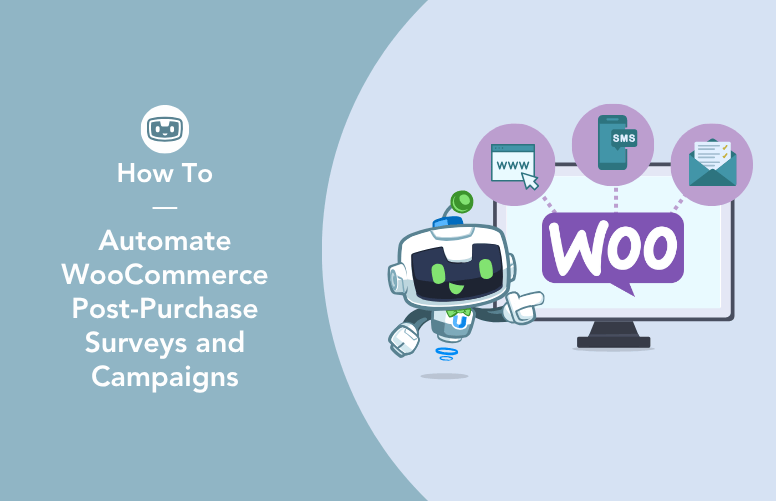
This Post Has 0 Comments